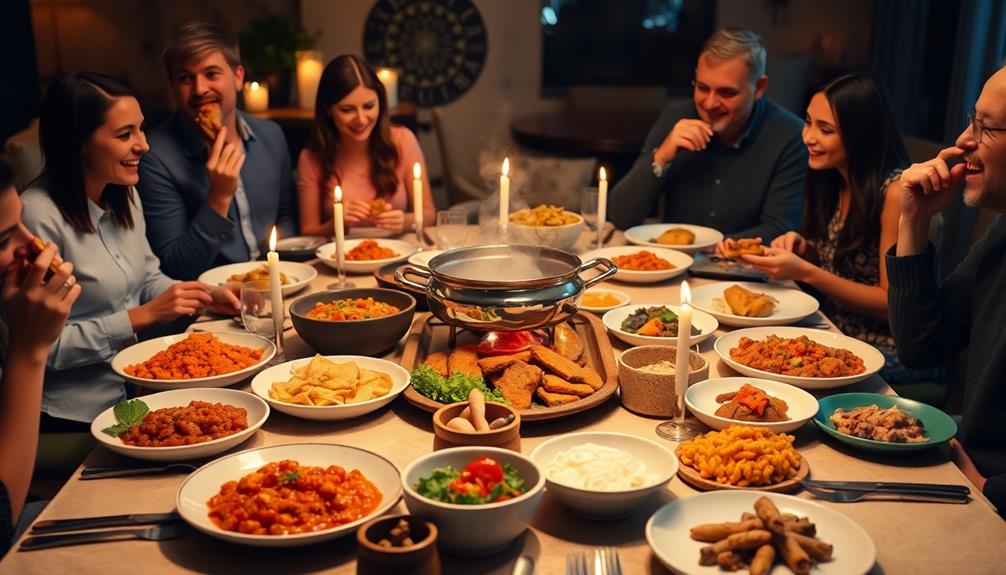Certain foods taste better when someone else makes them because of the emotional connections and shared experiences involved. When someone you care about prepares a meal, it often comes with a sense of anticipation and excitement. You engage more with the flavors and textures, breaking away from routine cooking. Additionally, surprise elements in their dishes can enhance enjoyment, making each bite truly memorable. This communal aspect can boost your taste perception considerably, elevating the meal's overall experience. If you're curious about how these factors play out, you'll find more interesting insights just ahead.
Key Takeaways
- Meals prepared by others evoke feelings of care and affection, enhancing overall enjoyment and taste perception.
- The element of surprise in unfamiliar ingredients or combinations ignites curiosity and elevates flavor experiences.
- Shared meals in social contexts amplify enjoyment and flavor ratings through emotional connections and communal bonding.
- Anticipation and excitement surrounding meals made by others heighten taste perception and salivation, enhancing flavors.
- Breaking routine with meals from others fosters mindfulness, promoting a richer and more engaging dining experience.
Perception of Food Prepared by Others
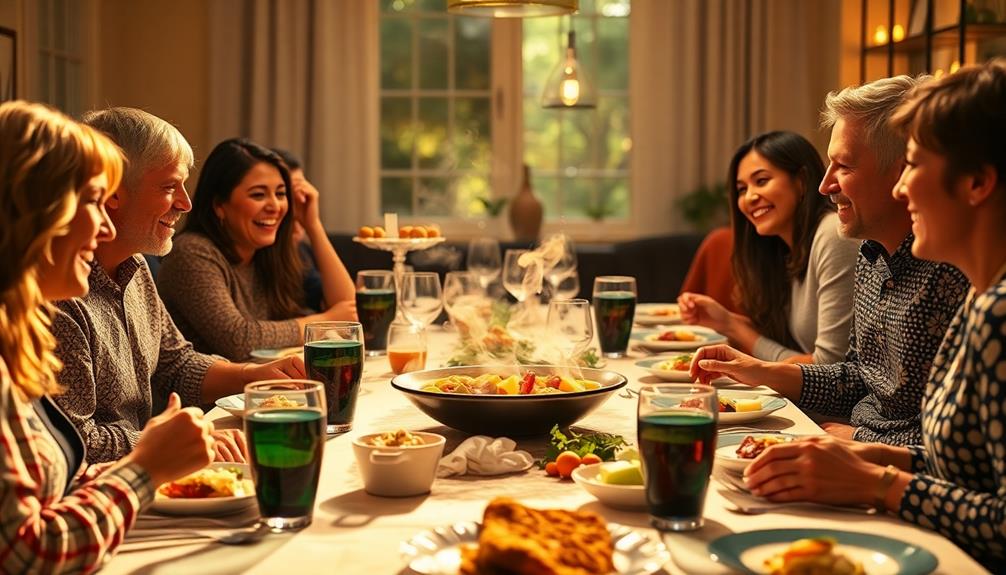
When you enjoy a meal prepared by someone else, the experience often feels heightened because of the anticipation and excitement that comes with sharing food. This is especially true during special occasions like Halloween, where themed dishes such as Graveyard Taco Dip can add a fun and festive element to the gathering.
This phenomenon isn't just about the flavors involved; it's deeply rooted in psychology. Research shows that the social context surrounding a meal can greatly influence your perception of taste. For instance, you might rate the flavor of chocolate as more delicious when it's shared with friends compared to when you eat it alone.
When someone else prepares your food, it introduces an element of surprise and novelty, making each bite feel more special. This contrasts with meals you cook yourself, where familiarity can lead to diminished excitement.
The communal atmosphere during shared meals fosters positive feelings and emotional connections, amplifying your overall enjoyment. As you gather around the table, the laughter and conversation become integral to the meal itself, enhancing the flavors in a way that solitary dining simply can't replicate.
Emotional Connections and Food

Food isn't just about sustenance; it's intertwined with our emotions and relationships. When someone you love prepares a meal, it often carries an emotional weight that enhances your experience. A sandwich made by a partner or a dish from a family member symbolizes care and affection. This connection can elevate the taste and enjoyment of the food, turning an ordinary meal into a cherished memory.
Positive memories tied to shared meals can evoke nostalgia, further enriching the flavor experience. The emotional satisfaction derived from food prepared by loved ones can make it taste better than anything you whip up yourself. Sharing meals strengthens emotional connections, heightening the overall enjoyment.
Here's a quick look at how emotional connections shape our food experiences:
| Emotional Aspect | Impact on Taste | Example |
|---|---|---|
| Care and Affection | Enhances Flavor | A family recipe |
| Nostalgia | Evokes Memories | Holiday gatherings |
| Shared Experience | Increases Enjoyment | Dinner with friends |
When you savor a meal prepared by someone special, you're not just tasting food; you're experiencing a blend of emotions that elevate every bite.
Breaking Routine and Mindfulness
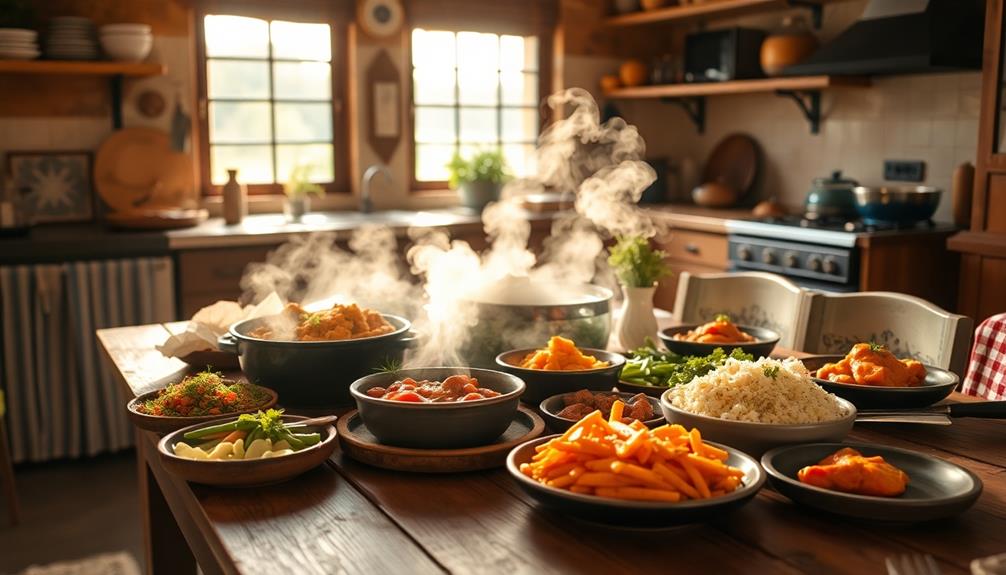
A meal prepared by someone else can be a delightful break from your usual routine, instantly enhancing your dining experience. When someone else makes your food, it introduces a rejuvenating change that often makes it taste better.
For instance, experiencing traditional dishes like Caldeirada or Caruru prepared by another can elevate the flavors in ways you mightn't achieve on your own. This shift allows you to break routine and engage fully with the flavors and textures of the dish.
The surprise of enjoying a meal crafted by another can reignite excitement around eating. You're more likely to notice new ingredients and preparations that you might overlook when you cook for yourself.
This heightened awareness fosters mindfulness, making you more present during the dining experience.
The Role of Anticipation
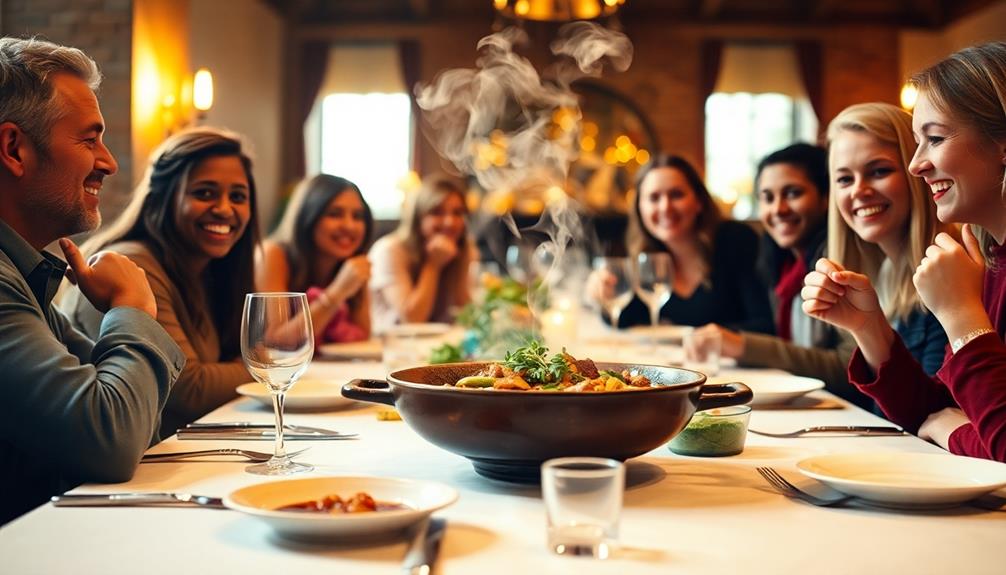
Anticipation plays an essential role in how you experience a meal, often amplifying the flavors and enjoyment that come with it. When someone else prepares your meal, like a comforting Turkey Soup made from leftover turkey, the enthusiasm surrounding it heightens your taste perception. This psychological phenomenon shows that as you keenly await the first bite, your brain prepares your body for the delicious experience, increasing saliva production and enhancing anticipation.
Conversely, when you cook for yourself, that enthusiasm diminishes. The psychological concept of specific satiation suggests that familiarity with your own cooking reduces the thrill of anticipation, leading to less enjoyment. Waiting for a meal made by someone else creates a sense of novelty, making the flavors more appealing compared to what you typically prepare at home.
Moreover, sharing a meal fosters a communal experience that enhances emotional connections and heightens enthusiasm. As you anticipate each flavor, you engage not just your taste buds but also your senses and emotions.
This interplay of anticipation and enjoyment transforms a simple meal into a memorable experience, illustrating the significant role anticipation plays in how you perceive and appreciate food.
The Element of Surprise
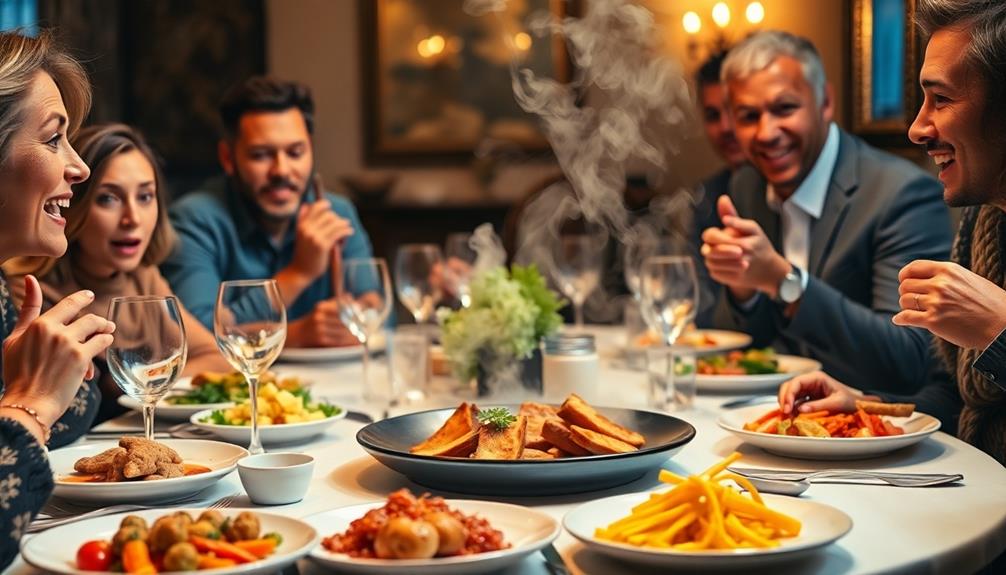
There's something magical about the element of surprise in a meal that can transform an ordinary dining experience into an extraordinary one. When you encounter unexpected ingredients, your curiosity spikes, heightening enjoyment and making each bite more memorable. This unpredictability boosts flavor perception, as you explore new textures and combinations that you wouldn't have anticipated.
| Element of Surprise | Impact on Enjoyment | Sensory Engagement |
|---|---|---|
| Unexpected Ingredients | Heightened enjoyment | Amplified anticipation |
| Novel Flavors | Strong emotional responses | Enhanced flavor perception |
| Unfamiliar Textures | Memorable experiences | Curiosity and exploration |
| Unique Combinations | Positive associations | Increased impact per bite |
The anticipation of tasting something new keeps your senses engaged, elevating the meal beyond the familiar. Food prepared by others often incorporates surprise elements, making dining out or sharing meals with friends a delightful exploration of flavors. In contrast, self-made dishes tend to fall flat, as expectations are set in stone. So, the next time you enjoy a meal created by someone else, savor that element of surprise—it's a key ingredient in your culinary adventure!
Social Influences on Taste
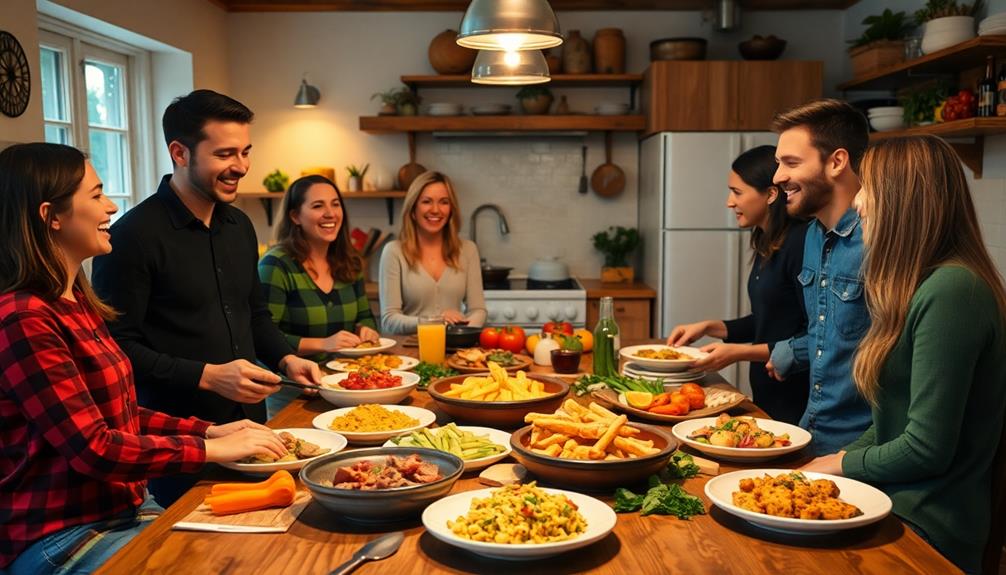
When you share a meal with others, the experience can elevate the flavors in ways you mightn't expect. Studies show that food tastes better when enjoyed in a social context. For instance, when you share chocolate with a friend, you're likely to rate its flavor higher than if you ate it alone. This is partly because your emotional state and connections with those around you greatly impact taste perception.
Southern classics like satisfying fried pork chops can become even more delightful when shared in a communal setting, as the enjoyment of such comfort foods is heightened by the company you keep.
Eating in groups can even increase your food intake by as much as 48%. The act of sharing food fosters a sense of community, amplifying your enjoyment and satisfaction during meals. When you observe others savoring their dishes, it can trigger your appetite and desire for the same food, illustrating the powerful effects of social dynamics on eating behavior.
Ultimately, the flavors of a meal are intertwined with the people you share it with. By engaging in these communal dining experiences, you not only enhance the taste of your food but also create lasting memories and stronger connections with those you care about.
Frequently Asked Questions
Why Does Food Taste Better if Someone Else Makes It?
When someone else makes your food, you experience heightened anticipation and excitement. The emotional connection and surprise elements enhance your enjoyment, making each bite feel richer, tastier, and more satisfying than when you prepare it yourself.
Does Eating With Other People Make Food Taste Better?
Yes, eating with others does make food taste better. You'll find the flavors more vibrant, as shared experiences and connections enhance your enjoyment, turning meals into memorable moments that elevate your overall dining experience.
Why Do Things Taste Better When They're Not Yours?
When you savor someone else's creation, it's like tasting a secret recipe of joy. You relish the flavors more, feeling excitement and connection. The anticipation heightens your senses, transforming every bite into a delightful experience.
Why Do Some Foods Taste Different to Different People?
Some foods taste different to you because your preferences, memories, and emotional connections shape your perception. Factors like social context, cooking familiarity, and cognitive engagement also influence how you experience flavors and enjoyment. Even elements like the ambiance of a dining environment or background noise can subtly alter your eating experience. For instance, studies have explored how sound influences food taste, revealing that higher-pitched sounds can enhance sweetness perception, while lower-pitched tones may emphasize bitterness. Thus, your sensory experience of food is a multifaceted interplay of taste, memory, emotions, and even auditory cues.
Conclusion
When someone else makes your food, it can elevate your dining experience in surprising ways. Did you know that studies show people enjoy meals made by others up to 20% more than their own cooking? This boost in enjoyment often comes from emotional connections and shared moments. So next time you savor a dish prepared by a friend or family member, remember that it's not just the flavors at play—it's the joy of connection that makes it taste even better.

